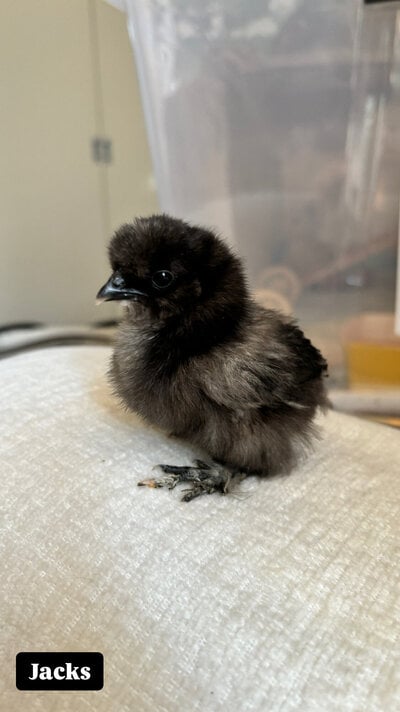silkiemama002
Songster
Hey there!
I have been searching high and low for a week-by-week growth/gender comparison for silkies, to help me guess what sex my chicks might turn out to be. I know it is almost impossible but I am interested in testing out theories!
I found two great threads on BYC that I found super interesting; two people posted week by week pictures of their babies and had people guess along the way through their development confirming the result later down the track. Although my guesses were wrong on basically all of them (lol) I found it to be such a great resource. So I'd love to contribute to this source of info as well, in case anyone else is looking for the same thing. (Doesn't hurt to have other peoples opinions on their gender either )
)
 I've included three pictures of each baby with their names:
I've included three pictures of each baby with their names:
Picture one: Angled photo of beak
Picture two: Side on
Picture three: Front on with comb
They're purebred silkies and all from the same flock. They were born on 4th September within about 2 hours of one another, so two weeks old tomorrow! (We're in Aus so 17th here today)
Let me know what you think! I'll come back and update again next week with week 3 ... Even if no one replies lol
P.S: DON'T MIND MY GROSS NAILS I'M GETTING THEM DONE TODAY... YARD WORK IS NOT KIND TO HANDS
First Pics: Two Weeks Old
I have been searching high and low for a week-by-week growth/gender comparison for silkies, to help me guess what sex my chicks might turn out to be. I know it is almost impossible but I am interested in testing out theories!
I found two great threads on BYC that I found super interesting; two people posted week by week pictures of their babies and had people guess along the way through their development confirming the result later down the track. Although my guesses were wrong on basically all of them (lol) I found it to be such a great resource. So I'd love to contribute to this source of info as well, in case anyone else is looking for the same thing. (Doesn't hurt to have other peoples opinions on their gender either
Picture one: Angled photo of beak
Picture two: Side on
Picture three: Front on with comb
They're purebred silkies and all from the same flock. They were born on 4th September within about 2 hours of one another, so two weeks old tomorrow! (We're in Aus so 17th here today)
Let me know what you think! I'll come back and update again next week with week 3 ... Even if no one replies lol
P.S: DON'T MIND MY GROSS NAILS I'M GETTING THEM DONE TODAY... YARD WORK IS NOT KIND TO HANDS
First Pics: Two Weeks Old
Attachments
-
 Patsy - Angled Beak.JPG223.8 KB · Views: 241
Patsy - Angled Beak.JPG223.8 KB · Views: 241 -
 Eddie - Comb.JPG241.3 KB · Views: 58
Eddie - Comb.JPG241.3 KB · Views: 58 -
 Eddie - Side.JPG328.1 KB · Views: 48
Eddie - Side.JPG328.1 KB · Views: 48 -
 Eddie - Angled Beak.JPG261.6 KB · Views: 37
Eddie - Angled Beak.JPG261.6 KB · Views: 37 -
 Jacks - Comb.JPG227.3 KB · Views: 42
Jacks - Comb.JPG227.3 KB · Views: 42 -
 Jacks - Side.JPG255.1 KB · Views: 40
Jacks - Side.JPG255.1 KB · Views: 40 -
 Jacks - Angled Beak.JPG234.1 KB · Views: 40
Jacks - Angled Beak.JPG234.1 KB · Views: 40 -
 Patsy - Comb.JPG210 KB · Views: 46
Patsy - Comb.JPG210 KB · Views: 46 -
 Patsy - Side.JPG321.9 KB · Views: 43
Patsy - Side.JPG321.9 KB · Views: 43
Last edited:






